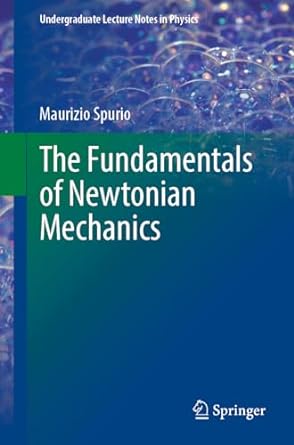A device schematized in Fig.8.16 consists of: two equal balls of mass (M=40 mathrm{~g}), constrained to move
Question:
A device schematized in Fig.8.16 consists of: two equal balls of mass \(M=40 \mathrm{~g}\), constrained to move without any friction along a straight guide, connected by a spring of elastic constant \(k=300 \mathrm{~N} / \mathrm{m}\), rest length \(L\) and negligible mass. Initially, the device is stationary in the reference frame \(\mathrm{S}\) integral with the guide, and the spring is at rest. At instant \(t=0\) the left ball is hit by a ball outside the device, of mass \(m=10 \mathrm{~g}\), which comes from the left and also moves along the guide with velocity \(v\). The collision between the two balls is central and perfectly elastic. Immediately after the collision the \(M\) ball hit moves with velocity \(V=7.20 \mathrm{~m} / \mathrm{s}\). Determine:
1. the velocity \(v_{f}\) of the ball of mass \(m\) in reference frame \(S\) after the impact;
2. the velocity \(V_{c m}\) of the center of mass of the device after the impact;
3. the total mechanical energy of the device in the reference frame S;
4. the total mechanical energy of the device in the reference frame \(S\) ' of its center of mass;
Fig. 8.16

5. Explain (briefly!) why the spring \(k\) compresses and determine by how much it shortens when the compression is maximum.
6. Show that the ball \(M\) hit moves in harmonic motion in the reference frame \(S^{\prime}\) and determine the period \(T\) of oscillation. In case you fail, estimate \(T\) by dimensional analysis.
Step by Step Answer:






